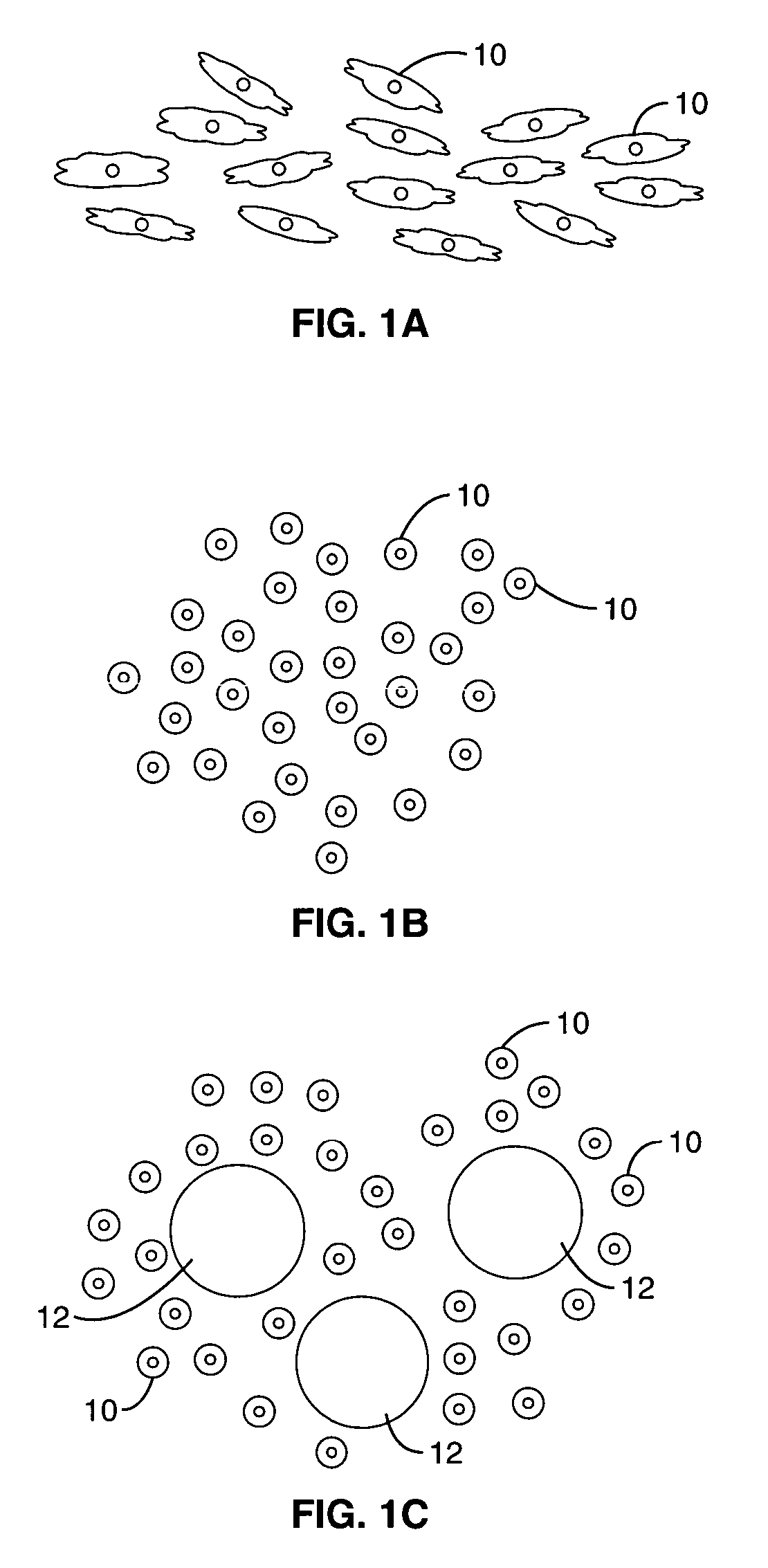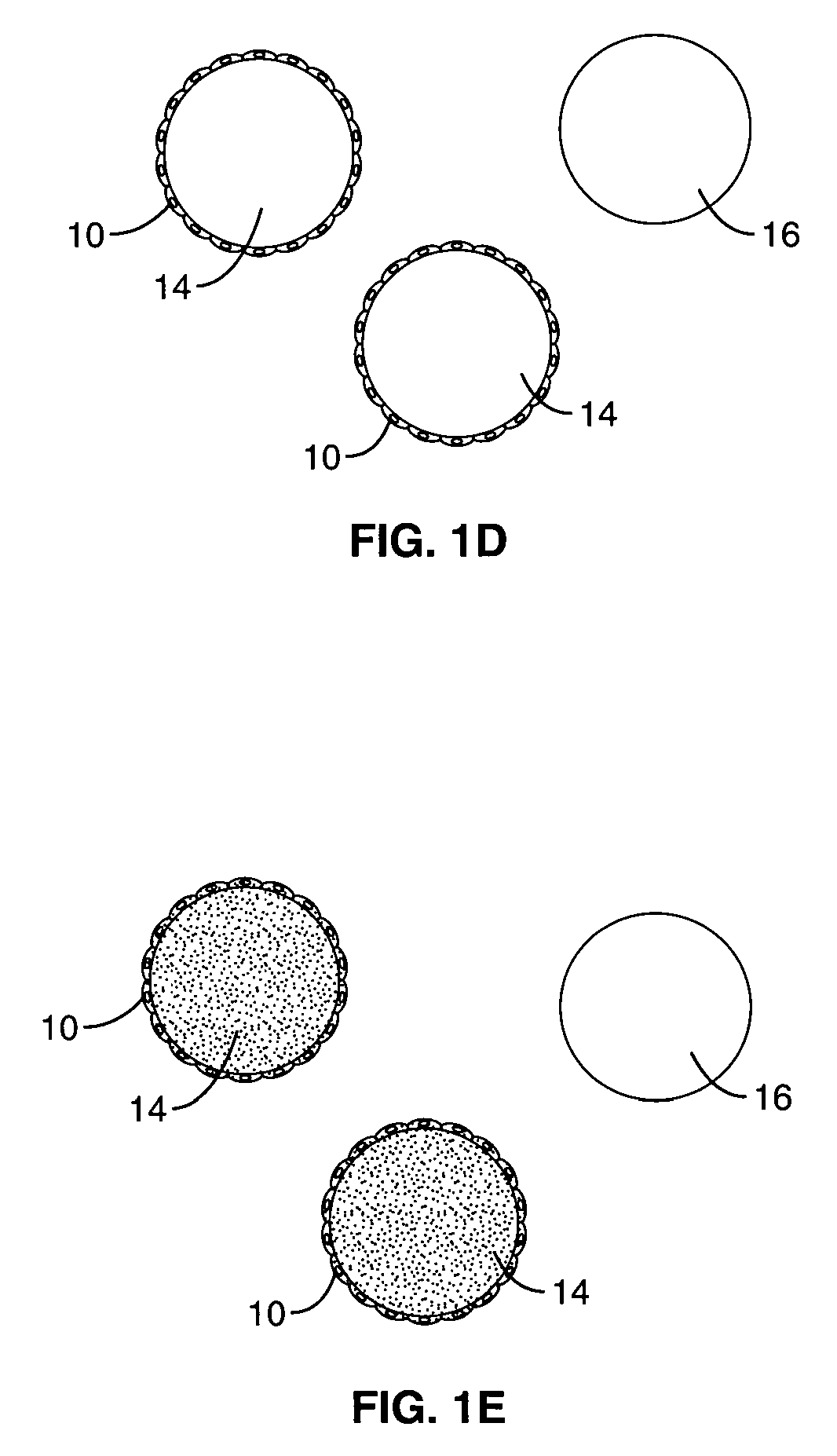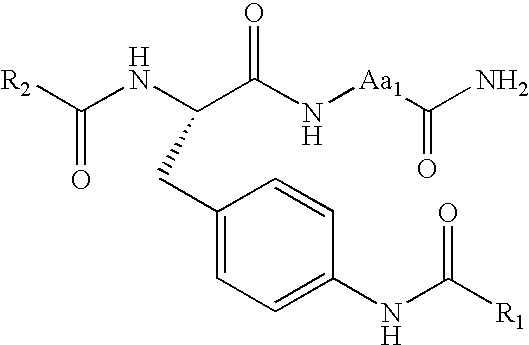Method for screening combinational bead library; ligands for cancer cells
a combinatorial library and bead technology, applied in the field of combinatorial library screening, can solve the problems of insatiable existing methods, difficult use of epithelial cells, inaccurate screening methods, etc., and achieve the effects of promoting cell growth and proliferation, promoting attachment and growth or proliferation of epithelial cells
- Summary
- Abstract
- Description
- Claims
- Application Information
AI Technical Summary
Benefits of technology
Problems solved by technology
Method used
Image
Examples
example 1
[0029]A one-bead-one-peptide combinatorial library, containing random cXXXXXXc peptides, was prepared using the “split synthesis” method of Lam et al., “A new type of synthetic peptide library,” 82-84. The random peptide library contained 196=4.7×107 possible permutations of the formula cXXXXXXc, where “c” is D-cysteine, and “X” is one of 19 natural L-amino acids. In this example, and in all other cases where a peptide or peptidomimetic library is used, the D-cysteines provide intramolecular cyclization by disulfide bonding.
[0030]TentaGel polystyrene beads, with a diameter of 80 μm and with grafted polyethylene glycol of 0.25 mmol / g, were used as a solid phase support (Rapp Polymere, Germany). A synthetic solid phase method using fluorenylmethyoxycarbonyl (Fmoc) chemistry was adapted for synthesizing the peptide bead library.
[0031]The non-small-cell lung cancer cell line, A549 (American Type Culture Collection, Manassas, Va.), was used. The cell line was maintained in appropriate cu...
example 2
[0043]The method as described in Example 1 was performed, except that the combinatorial peptide library was screened with a different type of epithelial cancer cells, the ovarian cancer cell line CaOV3 (American Type Culture Collection).
[0044]As described in Example 1, after culturing for about 24 to 72 hours, beads with a monolayer of cells were observed. These positive beads were isolated and the amino acid sequence of each positive bead was determined, as described in Example 1.
[0045]The following ligands were identified: cDGLGDDc and cDGWGPNc.
example 3
[0046]The method as described in Example 1 was performed, except that a different combinatorial library was used and different types of epithelial cancer cells were used. A one-bead-one-compound combinatorial peptide library was prepared according to the method described in Example 1, with the following formula: cX2GX4GX6X7c, where “c” is D-cysteine; “G” is glycine; X2 is D,d,N, n, S,Q,q,T, HoSer, Cit, E, e, HoCit, Hyp, Aad, Lys(Ac), A, 4-Pal, D-3-Pal, Pra, D-Pra, Y, Aib, M, Phe(4-CN), Tyr(3-NO2), Tyr(Me), Phe(4-NO2), Bug, Ach, Tyr(3,5-I), Aic, Phe(3-Cl), Chg, Bta, Bpa, Phe(3,4-Cl), Hyp(Bzl), or Cha; and X4, X6 and X7 are N, S, Q, T, HoSer, Cit, HoCit, Hyp, H, A, Pal, D-3-Pal, Pra, R, Y, Aib, Abu, P, M, V, Nva, Tyr(3-NO2), W, Phg, Phe(4-NO2), Bug, I, Ach, L, Nle, Phe(4-Me), Aic, Phe(3-Cl), HoPhe, Chg, Bta, Bpa, 2-Nal, 1-Nal, Phe(3,4-Cl), Hyp(Bzl), or Cha.
[0047]The peptide library was screened with one of the following epithelial ovarian cancer cell lines: SKOV-3 and ES-2 (American T...
PUM
| Property | Measurement | Unit |
|---|---|---|
| diameter | aaaaa | aaaaa |
| chemical structure | aaaaa | aaaaa |
| adhesion | aaaaa | aaaaa |
Abstract
Description
Claims
Application Information
 Login to View More
Login to View More - R&D
- Intellectual Property
- Life Sciences
- Materials
- Tech Scout
- Unparalleled Data Quality
- Higher Quality Content
- 60% Fewer Hallucinations
Browse by: Latest US Patents, China's latest patents, Technical Efficacy Thesaurus, Application Domain, Technology Topic, Popular Technical Reports.
© 2025 PatSnap. All rights reserved.Legal|Privacy policy|Modern Slavery Act Transparency Statement|Sitemap|About US| Contact US: help@patsnap.com



